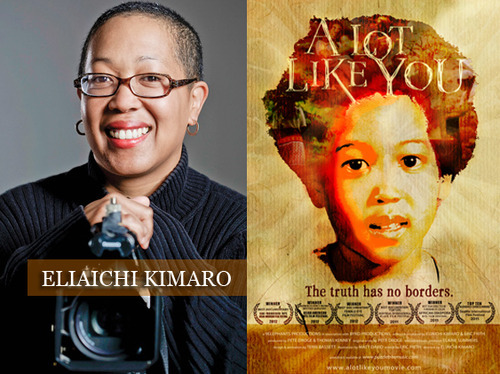ALLY in Collective Eye Blog
August 28, 2013So delighted to be the featured Filmmaker Interview this month on our educational distributor Collective Eye‘s blog! (I’ve reprinted the interview below, but original can be found here.)

What was the target audience that you were intentionally gearing the film towards when beginning production, and how has it changed?
My original intent for A LOT LIKE YOU was to create a beautiful home video about Chagga culture to share with my (future) kids. As a first time filmmaker, I really had no expectations beyond that.
When we returned from Tanzania, we had 80 hours of footage. Once we found our editor, Eric Frith, our creative team grew from there. It didn’t take long for me to see that this project was on its own path, and wanted to be something much bigger than I had originally imagined.
Over the course of the next 8 years, we went through countless revisions, each one exploring our story through a slightly different lens. We ended up with a film that is ultimately about the lens we all bring to the story of our lives—the stories we inherit about who we are and where we come from; and how we filter the stories we pass down to the next generation, and why…
How would you explain your personal motivation for making this film?
This project was born out of the slightly panicked realization that if my partner and I were to have kids, their understanding about what it means to be Korean or Tanzanian would have to come from me. The mere thought of that responsibility was terrifying. Because what did I know?!
Then driving to work one day, I was listening to a song that sparked a vision in which I could see the scenes of our opening travel montage unfolding. And I felt a tremendous sense of relief because I felt like I had finally figured out a way to preserve our cultural heritage and family stories—not only for our kids, but also for me. Never mind that I had zero filmmaking skills or equipment or know-how. I just signed up for Intro to Filmmaking classes at our local media arts center. And seven months later, my partner and I quit our jobs, bought our film equipment and one-way tickets to Tanzania. And we were off!
After production was complete, what were the first steps you took in order to begin getting the word out about the film?
A LOT LIKE YOU premiered at the 2011 Seattle International Film Festival, and has been touring the festival circuit ever since (picking up awards long the way!) In 2012, we were invited to submit our film for PBS consideration. So we cut 30 minutes from our feature length film to get down to a broadcast hour. We had our PBS broadcast premiere in January 2013.
As I’ve been touring the campus/conference lecture circuit, I have found that being able to offer both versions of the film has been a tremendous advantage. Schools often use the festival cut (80min) at featured screening events, while the 50-minute cut is the version most often used in classrooms.
As an activist-turned-filmmaker, my goal for moving this film out into the world is to use A LOT LIKE YOU as a springboard for deepening discussions about the key issues raised. We have been partnering with activists, educators and non-profits who want to use this film to facilitate deep personal exploration and/or expand the national discourse around:
– Race, Culture & Identity
– Violence and Abuse
– Intersectionality
– Arts + Community Engagement
What were the biggest struggles you faced making this film?
We were a 2-person novice filmmaking team, shooting on location in a rural village on Mt Kilimanjaro for 9 months. So our learning curve was steep — working around frequent blackouts, navigating language and cultural communication barriers, grappling with what “informed consent” really means when your film subjects have never seen a movie.
When we returned to the US in 2004, we struggled to find funding. I was a first time filmmaker with no proven track record, and the US economy was taking a turn for the worse. Funders were tightening their purse strings, only looking to fund the next “sure thing”—which translated to engaging, informative single-issue docs that came complete with a clearly-defined call to action. So we focused our efforts instead on individual and major donor asks, crowd funding, house parties, even a benefit auction organized by our friends. All these efforts combined raised enough to cover the first year of post-production. Which was tremendous! And yet we went on to edit the film for another 7 years…
How is A LOT LIKE YOU received when presented at colleges and universities?
The undeniable gift of A LOT LIKE YOU is its power to ignite dialogue and inspire deep introspection. Over the past 3 years, we have screened in front of school audiences, from middle school through post-graduate, across the US and branching into Europe, Asia and Africa. The response to our film is remarkably consistent across race, age, gender, nationality. After every screening, audience members feel compelled to open up and engage in dialogue, considering how the themes of identity, history, contradiction, and migration have played out in their own lives.
What are the most important ideas that you want viewers to take away after watching A LOT LIKE YOU?
I hope one take-away of our film will be realizing how important it is for us all to tell our stories. Especially as a mixed-race,1st generation American woman, with a daughter who’s even more mixed than myself — I feel a certain responsibility to make sure we are contributing our stories to this evolving narrative of the human experience. We must become the Subjects of our own stories, instead of the Objects of someone else’s. Because there is something profoundly liberating and validating about seeing aspects of your self, your experience, your truth, reflected back at you from the page, from the canvas, from the screen.
And beyond that, this film is truly remarkable in its ability to stimulate dialogue and introspection. It will resonate with anyone — regardless of race, class, gender, culture — who has ever been curious about exploring who they are and where they come from.
What is the significance of the subtitle “the truth has no borders”?
At its core, A LOT LIKE YOU explores the questions of identity and belonging, and explores how we decide which stories we pass down to the next generation. In the film, we witness three separate instances where someone must decide whether to be complicit in the shaming silence around my Aunts’ traumatic experiences or to finally break through it…
With my Aunts, we witness the transformation that takes place as they finally find the words to speak their truth. It’s the power of their story that compels us, as viewers, to deeply consider the hidden truths in our own lives. And after the film is done, it invites us to reach out and connect with each other from this vulnerable, humble place.
At the end of our interview, my Aunts asked me, “Now that we’ve shared our stories with you…what are you going to do about it?” It really was more of a commandment, a call to action, than a question. But their courage in speaking up inspired me (albeit years later) to do the same in my own storytelling. And now, it’s amazing to see how many lives are being transformed by this small ripple that was set in motion 10 years ago when my Aunts opened up and shared their truth with me in a hut on a mountain halfway around the world.
